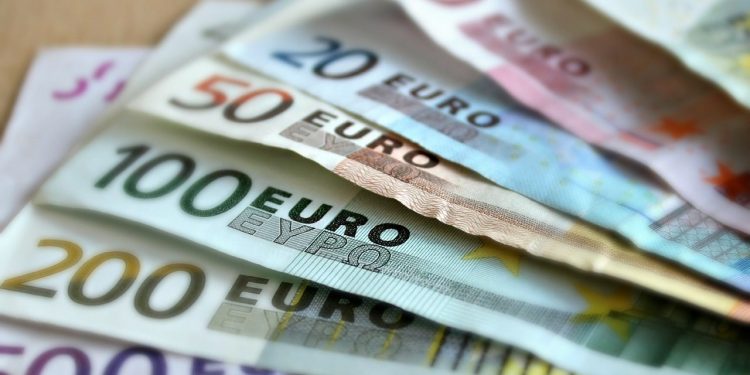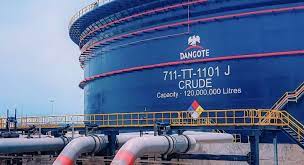
“Egie Akpata, a Nigerian investment banker and an active player in the capital market is of the opinion that Nigeria can easily afford to pay both the interest and principal on its debt”.
Nigerian Minister of Finance, Zainab Ahmed, revealed in July that in Q1 2022, Nigeria spent about N1.94 trillion servicing debts. This sum was about N310 billion above the revenue generated during the same period. This means Nigeria spent over 100% of its revenue on debt servicing amidst an acute shortage of foreign exchange.
The rise in the cost of servicing Nigeria’s debt has stimulated a lively discussion. There seems to be a consensus among Nigerian economists and policy experts that the country’s debt is not sustainable. Egie Akpata thinks that Nigeria can easily afford to pay both the interest and principal on its debt. He is an investment banker and an active player in the capital market
Mr. Akpata argues in a newspaper interview that unlike Ghana, or Zambia, Nigeria does not need to restructure its debt or borrow from the IMF to meet external payment obligations. He advanced several arguments to back his position on the sustainability of Nigeria’s debt.

The Favourable Composition of Nigeria’s Loans
The bulk of Nigeria’s debt is domestic, i.e payable in naira, while total foreign debt is $40 billion. Of the $40 billion in foreign debt, commercial loans i.e., Eurobonds make up about $15.6 billion, while multilateral and bilateral loans make up the remaining.
The N22 trillion ways-and-mean borrowing from the Central Bank of Nigeria makes up a significant portion of domestic debt. Additionally, the country has naira bonds worth about N15 trillion (money owed to domestic investors, mainly pension funds and Nigerian banks).
Domestic debt is easier to service as it is denominated in the national currency. The bigger component of Nigeria’s foreign debt (from multilateral agencies like the World Bank) has soft payment terms.
Read Also: We Can’t Breathe: How African Countries Suffocate Themselves With Debt
What is Debt Restructuring?
Debt restructuring “typically involves getting lenders to agree to reduce the interest rates on loans, extend the dates when the company’s liabilities are due to be paid, or both”. It is usually the last resort when countries are unable to meet the payment terms of their loans.
Some prominent debt restructuring incidents include the “Brady Plan”. The United States Government initiated the plan in the 1980s to relieve debt-ridden Latin American countries. Another example of debt restructuring is China offering to restructure the debt of low-income countries in Africa whose finances were negatively impacted by the economic impact of the novel coronavirus pandemic.
While Nigeria does not have a history of debt restructuring, we have a history of debt relief. In 2005, the Obasanjo government negotiated a debt relief deal with the Paris Club of creditor countries.
The deal involved the payment of $12 billion in exchange for the cancellation of $31 billion of Nigeria’s debt with the Paris Club. Debt restructuring involves debts owed to commercial lenders while debt relief involves debt owed to governments. Governments coordinate debt repayment negotiations in the Paris Club.
Why Local Debt Restructuring is Not an Option for Nigeria
According to Mr. Akpata, restructuring local debts, especially naira bonds, would have significant adverse effects on the Nigerian banking system and the economy.
“Restructuring of local sovereign bonds will usually imply a reduction in the coupon, extension of tenor, and potentially also a haircut on principal.” He stated that restructuring naira bonds would imply a reduction in the value of these bonds by up to 20% or more.
According to Akpata, shaving 20% off Nigeria’s extant 15 trillion naira bonds through debt restructuring would mean about N3 trillion reduction in payment due to investors in the bonds. Nigerian pension funds currently hold about 8.7 trillion worth of naira bonds, so would suffer a N1.7 reduction in payment. This would adversely affect Nigerian pensioners. As banks hold about N6 trillion in naira bonds, they would suffer a big loss from a drop in the market value of domestic bonds. This would push smaller Nigerian banks into financial distress.

Local Confidence Remains Strong
Akpata noted that as long as there is confidence in the Nigerian financial system, investors would continue to purchase naira bonds. To pay bondholders, “the government can also raise taxes”. Another option is to devalue the naira and boost the naira the government gets on FX income”.
The investment banker said that as a last resort, the “CBN can print money to meet naira debt payments”. This is better than taking the “very destructive route of naira debt restructuring”.
In a post on IMF’s blog, Peter Breuer, Anna Ilyina and Hoang Pham provide insights on the restructuring of local debt by governments. They warn that “restructuring domestic debt is like surgery: you only do it if you must, and you avoid it if it might do you more harm than good.” This is rather similar to Mr. Akpata’s position.
Read Also: The IMF’s SAP – The Treatment Nigeria Urgently Needs But Hates
How about Nigeria’s Foreign Debts?
Akpata argues that Nigeria’s foreign debt is very affordable with the country able to keep up with payments. He pointed out that Nigeria’s next Eurobond maturity was $500 million. This is due in July 2023. There is no maturity in 2024. He added that the monthly interest payment on the Eurobonds was about $100 million. This is a relatively small amount compared with the cost of the country’s fuel subsidy.
 While market confidence in Nigeria’s Eurobonds is not as strong as in the naira bonds, Akpata noted that this was a global phenomenon. He stated that there is a lot of volatility in the global bond markets. Most central banks are raising interest rates in a bid to combat rising inflation.
While market confidence in Nigeria’s Eurobonds is not as strong as in the naira bonds, Akpata noted that this was a global phenomenon. He stated that there is a lot of volatility in the global bond markets. Most central banks are raising interest rates in a bid to combat rising inflation.
Akpata said that Nigerian authorities have been reasonable in their issuance of Eurobonds. Nigeria’s 2027 Eurobond is trading at 14% yield. This is a very realistic rate compared to Ghana’s 2027 Eurobond, which currently trades at 45%.
Multilateral and bilateral (e.g. from development agencies of western governments) debts have low-interest rates, long moratoriums, and long repayment periods. Nigeria thus spends only about $50 million each month servicing these low-cost loans.
Debt Sustainability Versus Debt Distress
We could make a useful distinction between debt distress and debt sustainability. A country facing debt distress is unable to pay its creditors unless it restructures its debts. As Mr. Akpata correctly argues, Nigeria can still afford to pay its creditors and is hence not experiencing debt distress.
But Nigeria’s debt is not sustainable mainly because servicing it causes Nigeria to transfer its income wholly to creditors. The country invests less and less in healthcare, education, and physical infrastructure. Such investment is needed to boost economic growth and lay the foundations of economic development. Also, new Nigerian debt is not financing productive social and infrastructure expenditures. Such expenditure “can lead to higher income that may ultimately offset the cost of debt service and help balance the risks to debt sustainability.”
Weak Debt-Carrying Capacity
The sustainability of Nigerian debt cannot be discussed without reference to Nigeria’s debt-carrying capacity. The country’s microeconomic management and fundamentals are especially relevant. Nigeria’s fiscal and monetary policies seriously limit economic growth.
The huge untargeted and corruption-ridden fuel subsidy and foreign exchange rate management are huge burdens. They force unproductive debt on the nation. Nigeria is thus facing a “twin crisis”. One is an onerous debt repayment obligation that slows economic growth. And two, the worsening of economic performance. They could lead to debt distress.
The CBN Cannot Always Print Money
One of the leading commentators on the Nigerian economy, Dr. Ayo Teriba of Economic Associates, pointed out that the “CBN can’t always print money to service debt. The government must pay all debt costs before any other spending. US$150mn per month or US$1.8bn per year is not manageable for a country that spends the bulk of its oil revenue on subsidies. And that has to issue fresh Eurobonds to meet the foreign debt costs”.
Economic growth is the ultimate means of reducing debt and the principal measure of debt sustainability. Nigerian economic policy obstructs rather than stimulates growth. Interest rates are rising everywhere and Nigeria is not benefiting from the global rise in oil prices. This limits the possibility of an external trigger for a surge in economic growth.
Akpata is right that Nigeria should be wary of the costs of debt restructuring. But Nigerians also should worry about the sustainability of their country’s debt. Also, local and global drivers of growth are very weak. Nigeria is slowly marching towards debt distress in the absence of serious policy reforms.







